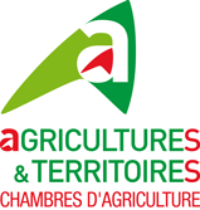Document type : Article published in Réussir Bovins viande
Author: Sophie Bourgeois
Preview: Pauline Garcia, an animal behaviourist who has a herd of 130 Salers cattle in the Cantal region of France, puts research findings into practice and offers training courses. She defines her approach as "positive cattle management", setting out to obtain a calm and cooperative herd.
"Many necessary interactions are perceived negatively by cattle - various care activities, an injection or the application of a spray, a calf being restrained, being blocked at the feed fence, going through a crush ... - not to mention the intervention of outsiders such as the vet or inseminator. You have to prepare the animals for this," explained Pauline Garcia during a free webinar organized by Vétoquinol in December 2020. "And preparing them consists of diluting the 'negative' interactions in the 'positive' interactions.'
She says that just because you have a large number of animals to care for doesn't mean you can't put certain practices into place. "You have to be aware that you are being watched all the time. When you interact with a cow, there are ten of them watching and taking note of what's going on, both positive and negative. It's called emotional contagion.'
"First and foremost, you have to understand that every cow keeps a 'trust account' in her head." This is the trust she places in the human who is daily at her side. It is a question of keeping this account in the black and, if possible, with substantial credit. "It is the relationship practices that are carried out at the right time and following a regular pattern that top up the 'trust account'. And farmers have three cards they can play here. The first is the food card. It's a power that we hold in our hands," she says. "You can give food in a bucket or by hand, but you have to avoid over-excitement and that's often what happens when cows see their farmer with a bucket. Pauline Garcia advises the use of a fanny pack, which allows you to keep your hands free and always have some feed with you. The feed should be given when the animal has behaved well.
The second card the farmer can play is scratching. While cattle are very tactile, human scratching is not innate and is a habit to be established at an early age. Giving the animal a scratch on the soothing points - at the base of the withers or the tail - is a reward for the animal. Pauline Garcia uses textured gloves (like horse grooming gloves) which increase the effect. The "scratch card" should also be used when the animal has behaved well. In a group, there is often one animal who insists with varying degrees of force, that she should be given some scratching as soon as the farmer arrives. You should not give it to her at that moment, in order not to reinforce this brutal behaviour, but make her back off (video youtube) and wait until she is calm to scratch her.
And the third card is to know how to release the pressure when it becomes too much for the cow. It is simply knowing how to back off, slow down, or wait, as soon as the animal starts to adopt a vigilant posture, raising its head very high and starting to blow.






